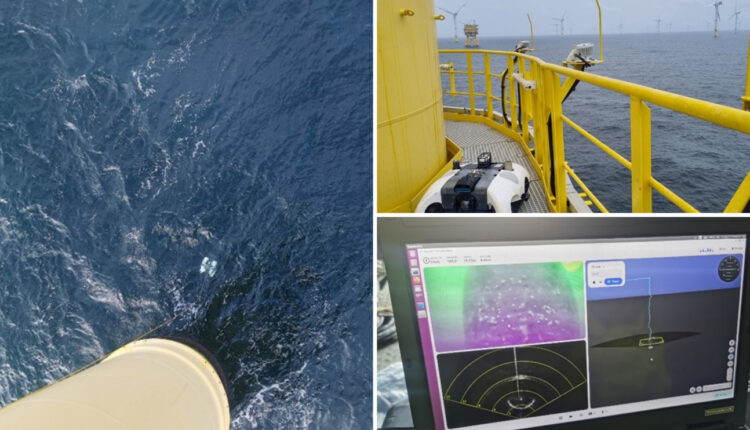World’s First underwater inspection vehicle featuring Adaptive Autonomy successfully deployed at Nordsee One Offshore Windfarm
First trials at an operational wind farm demonstrate the transformative potential of true autonomy as subsea infrastructure project activity increases to meet green energy targets
Hamburg, Germany – Trials of the state-of-the-art A.IKANBILIS Hovering Autonomous Underwater Vehicle (HAUV) conducted by Nordsee One GmbH and supported by manufacturer BeeX Pte Ltd and European partner Subsea Europe Services GmbH at the Nordsee One wind farm in the German North Sea have demonstrated true autonomous operation of an underwater inspection vehicle for the first time ever.
The trials, which took place this September, have proven an important milestone in the development and application of the unique A.IKANBILIS, which features an advanced AI powered Autonomy Engine that enables true ‘launch and leave’ operation for diverse underwater inspection tasks. With tethered or untethered operations, A.IKANBILIS optimises today’s standard recurring underwater inspection workflows, reducing associated equipment and manpower costs, while increasing capacity and safety.
During the trials, the Nordsee One team tasked an A.IKANBILIS HAUV to inspect monopile foundations including Impressed Current Cathodic Protection (ICCP) anodes and Cable Protection Systems (CPS). On launch, the vehicle was able to complete its objectives without a human in the loop, autonomously choosing the safest, fastest and most effective way to approach its mission parameters. The ability to make these decisions without operator input is possible due to the AI continuously learning from the suite of tightly integrated sensors, allowing intelligent adaption to complex and changing environments, such as tides, currents and visibility.
The inspection was carried out flawlessly and independently of any large on-site support vessels usually required for ROV- or diver-based underwater inspections, and with minimal specialised personnel in attendance. The geo-referenced reporting of the monopile condition and 3D CPS inspection was provided to the client in near real-time via an integrated cloud-based platform, reducing the typical weeks long wait for traditional reports to mere seconds.
Jan Schmökel, Balance of Plant Engineer at Nordsee One GmbH, said: “While we hear a lot about remotely-operated and autonomous technologies for marine data acquisition and underwater inspection, this is the first time we have witnessed a platform actually think and react accordingly to ensure an optimal approach based on the prevailing conditions. The speed and quality of the data reporting are unprecedented, and we are delighted to be trialling these innovations to achieve maximum value at our windfarms.”
Grace Chia, Co-Founder and CEO of BeeX said: “The unprecedented growth in Offshore Wind is key in meeting the world’s energy demands in a sustainable way. By 2025, we expect BeeX’s fully autonomous systems to help wind farm developers and operators reduce costs and risks to a fraction of today’s, from consenting to end-of-life. This successful deployment is the first step towards accelerating safer and clean energy for all, and we look forward to deployments at more windfarms across Europe.”
Sören Themann, CEO of Subsea Europe Services, the European sales and service partner for BeeX said: “The successful tests at Nordsee One have proven the disruptive capabilities inherent to the BeeX business case. The unique Autonomy Engine enables cost-efficient, launch and leave, carbon-neutral autonomous operation that will help the wind energy industry to install and maintain a huge influx of underwater infrastructure planned before 2030. This first demonstration on an operational wind farm is the launchpad for mainstream application within a few short years, enabling more asset owners to lower their costs, risks and carbon footprint.”


